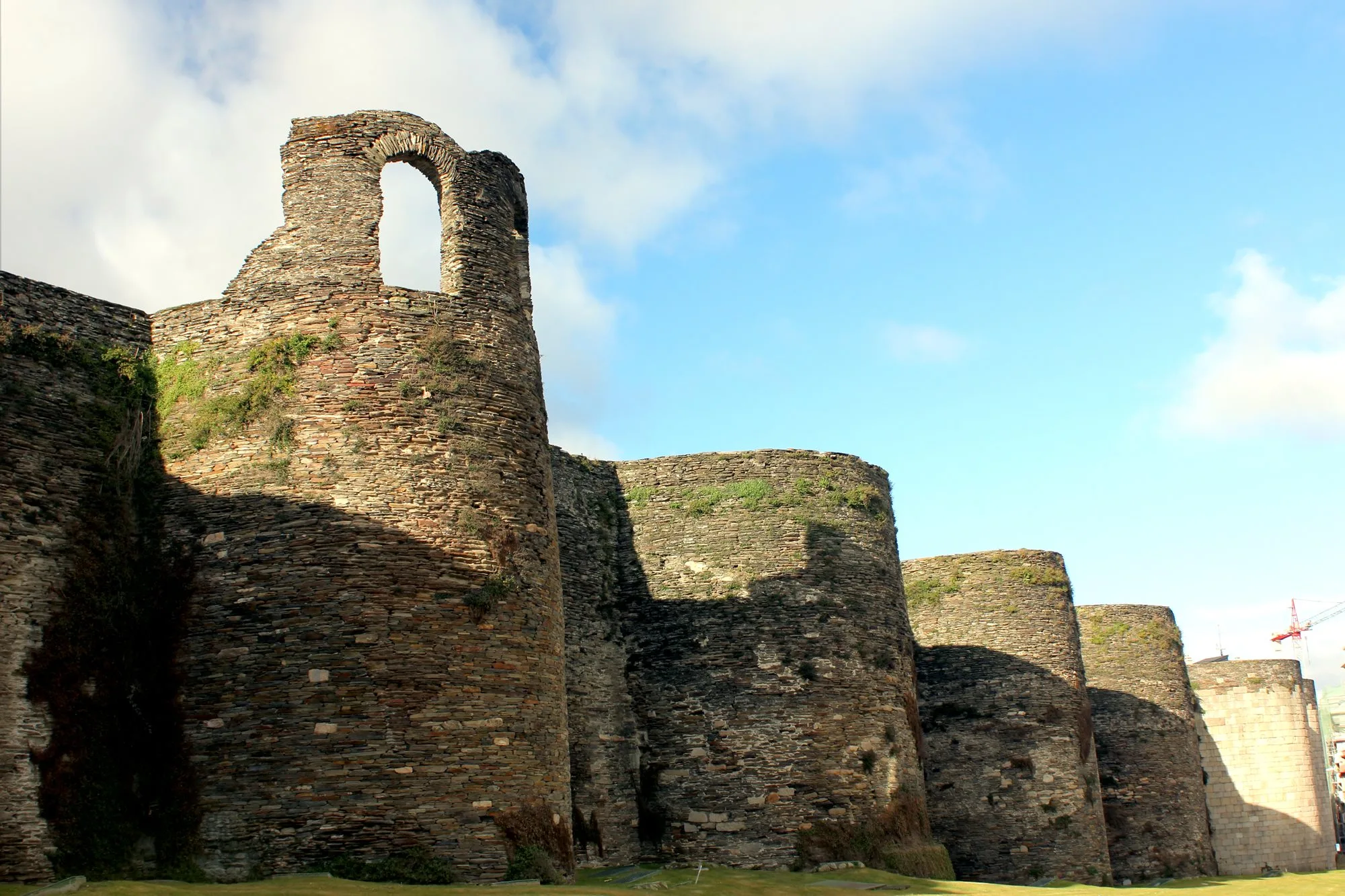
Cookie settings
We use our own and third-party cookies in order to offer our services, display videos, obtain statistics and offer personalized advertising.
For more information, please read our cookies policy.

The city wall was part of a defensive complex comprising a ditch, wall and an intervallum. Furthermore, it is the only one, anywhere in the three continents that saw Roman domination, to maintain its entire perimeter intact.
The Roman walls of Lugo date from the late 3rd century. They were built with a view to defending the Roman town of Lucus Augusti from the Barbarian menace. The walls formed part of a defensive complex which included a moat, the walls and the intervallum. They enclose an area of around 34.4 hectares and the perimeter is approximately 2,120 metres. The width is some 4.20 metres and the height varies between 8 and 12 metres.
Their plan is quadrangular and the criteria of the layout are unknown to this day, given that they left some important residential areas unprotected, while in other parts pieces of open ground were enclosed by the walls. They were built with a type of mortar made from an earth, gravel and pebble base, cemented with water. Today, they consist of 71 turrets (60 with a circular plan and 11 quadrangular ones) with two storey towers. Access to the walled enclosure is through 10 gateways, of which five were opened after 1853 due to urban growth.
UNESCO considers the Roman Walls of Lugo to be 'a unique and exceptional example of Roman military fortifications'.
Built: III-IV Centuries
Author: Anónimo
Style: Roman Classic
Category: Civil
Type: Wall
Address and telephone
Opening times
Free Access
If you see any mistakes or want to add anything to this information, please contact us.

Book your hotel